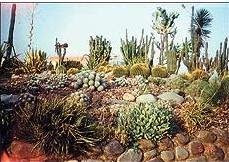By
Randeep Wadehra
Panchkula, designed to outshine Chandigarh in every respect, is today a vibrant township with a unique charm of its own. It has attracted the retired military officers, film stars, writers and poets to make it their home.
ACCORDING to mythologists, when the five Pandava princes were exiled they had spent some of their time in the jungles of the area, hence the name Panchkula — Clan of the five. Some interpret the name as the resting-place of the five Pandavas. About three decades ago, the place was partly arid and partly a sub-tropical forest. There was not much human habitation, save for an odd hamlet here and there. When the controversy over the status of Chandigarh was at its peak, the then Haryana Chief Minister, Bansi Lal, hit upon the idea of building an alternate state capital. Thus was the present Panchkula born-designed to outshine Chandigarh in every respect, be it town planning or architecture. Today Panchkula is a vibrant township with a unique charm of its own; charming enough to attract retired military top brass, film stars, writers and poets.Panchkula offers a lot to tourists as well as to students of architecture. The Nirjhar Vatika is a beautifully landscaped park. It boasts of an artificial waterfall and lake, with local and exotic birds that fly in during the winter from Siberia and other colder climes, lending an ethereal charm to the environs. Then there is the Topiary Park, which is spread over vast open spaces and boasts of the most attractive scenery in the region. Plants are foliage are shaped into different animals and birds. During the night, paths are illumined with lights and the atmosphere fills up with soothing music. It is an all-season favourite of those who want to recharge their batteries after a stint in the mad mad world.

The Cactus Garden here is the largest of its kind in Asia, it has about 3000 varieties of cacti from different parts of the world — about 60 per cent of all known cacti species. Imaginative landscaping has given the garden a unique character. An undulating surface has been created artificially. Spread over even seven acres, the garden is located in the heart of the town... inlaid with concrete paths winding through lush green lawns and dense cacti growth. Some of the prominent varieties are the three-metre-high golden barrel — a native of the USA and East Africa, adenium obsesum and Scilla India. Some of these varieties are between 12 and 20 feet tall, while others are flat or round. These multi-shaped thorny friends have the capacity to bear beautiful multi-hued flowers. I call the cacti ‘friends’ because they have a medicinal value and sustain life in arid deserts. One is surprised by the aesthetic potential of these plants. In this regard one may mention the beautiful Carnegia Gigantea and the Echinocetus Grusoni (the golden barrel).
Most of the cacti are round, and as John Ruskin had once remarked "Beauty lies in roundness and not in straight lines"! No wonder the cactus garden has become a major tourist attraction of the town. Panchkula is particularly proud of this garden.

The Shiva temple acquired its present shape about three years ago. Legend has it that years ago when the area was a jungle, a seer named Yoginath used to offer prayers here. The Shivalingam inside the temple is not man-made but has manifested on its own swayambhoo. When Yoginath died, his samadhi was constructed, which exists even today on the temple premises. People come from far and near to worship at the temple.
It is said all wishes get fulfilled if one prays here. The temple houses idols of the nine goddesses — the different manifestations of Goddess Durga. There is an idol of Ganesha too. The temple bells, unusually small in size, lend a unique aura to the atmosphere. Indeed, the temple’s architecture itself is unique. The huge Shivalingam, made of concrete, towers over the rest of the temple building.
The nearby hills offer scope for trekking and mountain climbing. The more adventurous can revel in the beauty of the rugged Himalayas. The town is well connected with roads to the traditional as well as new tourist spots in the mountains. The Chandigarh railway station and airport are nearby — a few minutes drive away. The Haryana Tourism, a government body, runs a network of hotels and restaurants to suit every pocket and taste.
The Yadavendra Gardens at Pinjore were laid in the 17th century. This Mughal-style garden is a major tourist attraction with its decorative lights and water-works. But it is more famous for the annual mango festival that is organised here by the Haryana Tourism, wherein more than 200 varieties of mangoes are displayed.One can also espy the remains of an ancient temple that was excavated near the garden recently — an archaeologist’s delight indeed!
THE TRIBUNE



No comments:
Post a Comment